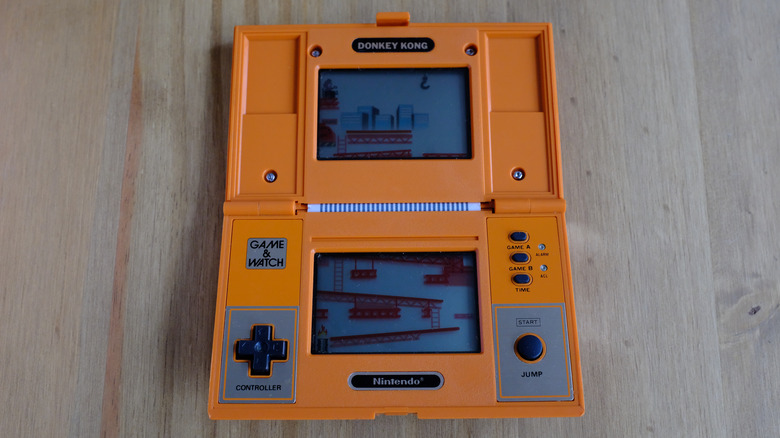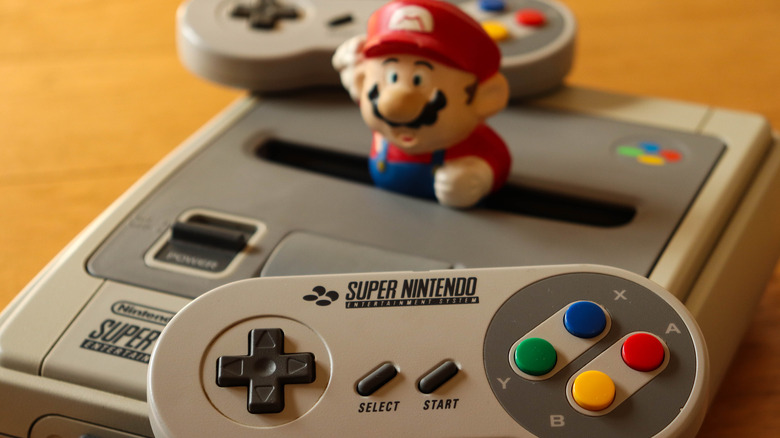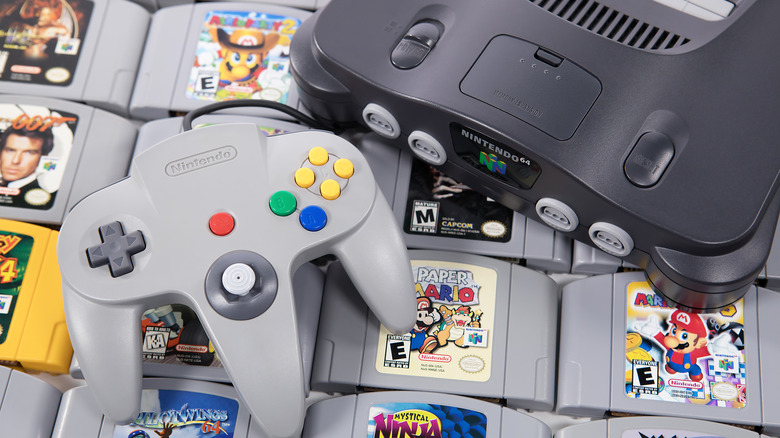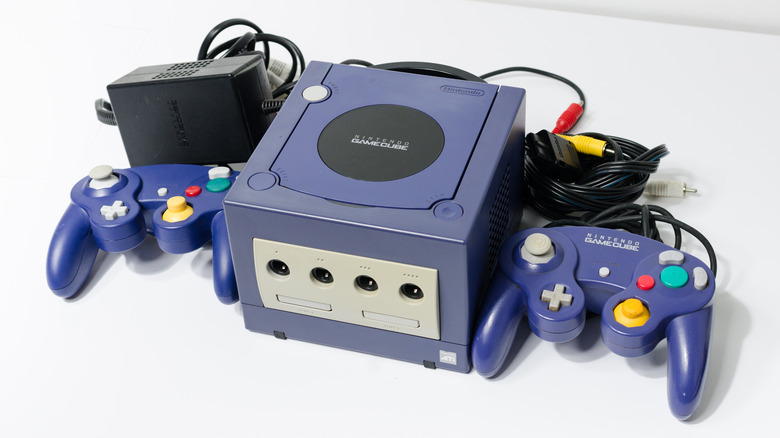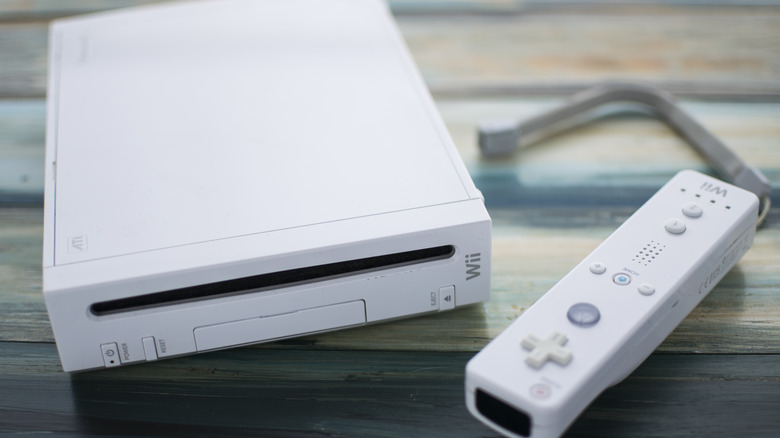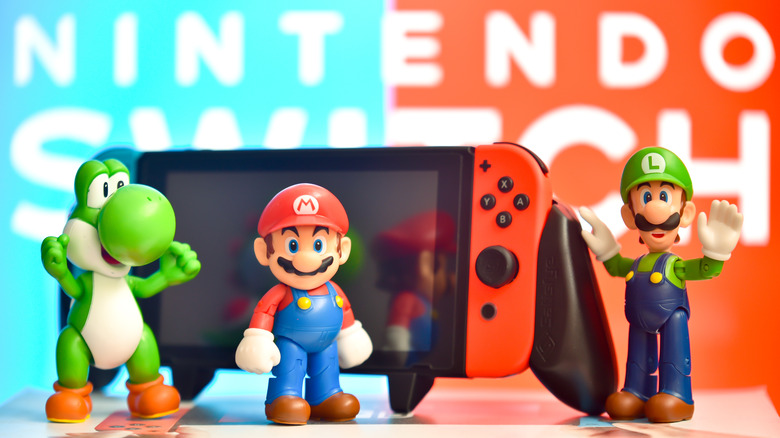The Fascinating History Of Nintendo
Undoubtedly one of the biggest names in gaming, Nintendo Co., Ltd. and its creations are easily recognizable all over the world. The names Bowser, Yoshi, Luigi, Samus, Kirby, Zelda, and of course Mario instantly offer up feelings of nostalgia for many, and drum up memories of great times exploring fantastic worlds full of wonder, peppered with innocent child-like humor, and surprises galore on truly iconic gaming systems.
Yes, we all know Nintendo as one of the purveyors of the gaming era, but what is not as well known is that despite a ban on gambling, the company was actually started in order to make handmade Japanese playing cards, or Hanafuda, over a hundred and thirty years ago!!!
Intrigued yet? Let's try to condense some points in their vast and intriguing history to the confines of this article, and explore the important milestones of this true gaming icon together – all the way from its humble beginnings to the current day.
Quick note here, please be aware that not every specific detail can be covered in this article, so some details might be left out for brevity.
To start off, here are a few quick facts to keep in the back of your mind while reading...
Playing their cards right
Founded by Fusajiro Yamauchi in 1889 in the beautiful city of Kyoto (where it is still headquartered to this day according to Retrojunk), the Nintendo Company was originally called Nintendo Koppai. Koppai, or 骨牌 as it is written in the original Kanji, means "Playing Cards." Yes, the multinational gaming behemoth we all know and love today started out as a simple playing card company over a century ago.
Despite a ban on gambling at the time, and all playing cards with numerical symbols being banned by the Japanese government as a result, the handmade Hanafuda cards were still allowed, since they did not have any numbers on them and were generally not directly associated with gambling. These cards became so popular, in fact, that the company had to hire more employees in order to keep up with demand. Over the years Nintendo started to manufacture more and more styles of cards, and eventually partnered up with what is now Japan Tobacco to sell their cards in cigarette shops all over Japan.
The early years
Our journey today starts with the aforementioned Fusajiro Yamauchi, who saw the potential in the market for these cards due to the ban on all others, and came up with a plan to re-introduce the ancient game (which had been around since the Edo period which lasted from 1603-1886) by crafting hand-drawn illustrations on cards made of mulberry tree bark. Consequently, According to the fine folks at Retro Junk, he opened up a new company named Nintendo Koppai on September 23, 1889.
This turned out to be a great idea indeed, as Nintendo's Hanafuda cards increased in popularity nationwide — eventually even being used for underground gambling. Where there's gambling, the Yakuza usually isn't too far away, so even the infamous Japanese Mafia used Nintendo's playing cards back in those days. As a matter of fact, according to the BBC, members of the Yakuza even had/have tattoos that are inspired by the illustrations on the Nintendo cards.
A little side-note here: If you've ever wondered why there was the random "flower power" in Mario Brothers, and the ability to shoot fireballs, it was because of these "flower cards." This is the one original tradition that has stayed with Nintendo to this day.
1929-1949
Due to internal family politics and the retirement of the original founder in 1929, the company was eventually renamed to Yamauchi Nintendo & Company in 1933 by its new president, Sekiro Kaneda Yamauchi who, according to Nintendo Fandom, also happened to marry former President Fusajiro's Daughter. Whether he got the position based on that marriage remains up for speculation. Regardless, the company didn't venture far from its prior leadership with this move.
Skipping over a bunch of internal politics here, the next major milestone for Nintendo came in 1949 when Hiroshi Yamauchi (Sekiro's Grandson) became the company's third President, ushering a new era by becoming the first company in Japan to produce playing cards from plastic (via En-Academic). The company would gain wide acclaim for these plastic playing cards, continuing its legacy as an innovative brand in the entertainment space. International recognition was not far behind for the company.
1949-1964 -- A new era begins
Eventually moving to a new location in 1952 and branching out internationally, Hiroshi had the great idea to partner up with Disney, which has always been popular in Japan it seems, in order to gain more appeal for their cards with Japanese families by featuring popular Disney characters on these cards (via WIRED).
Another stroke of genius at this time was releasing books that would explain in detail how to play the various Hanafusa games. This idea proved so successful that Nintendo sold over 600,000 decks in one year alone, prompting Hiroshi to take the company public on the Osaka Stock Exchange in 1962. The desire to branch out was also firmly instilled at this time. As a result and after a few name changes, finally, in 1963, the name was cemented as just Nintendo Co. Ltd in order to allow a wider gamut of at the time current and future products to be included.
Interesting ventures: Instant rice and love hotels
This being Japan, one of the first new products to be included was to manufacture individualized Instant Rice — trying to compete with the instant noodle boom at the time. Unsurprisingly, this was a major disaster for the company.
The next interesting idea, according to Nintendo Wire, was to operate a chain of Love Hotels, which also (and unsurprisingly) did not become quite so successful for the company. What was successful (at least for a while, according to Tech Times) was a taxi service operated exclusively by Nintendo (maybe that's where the idea for Mario Cart came from). Eventually, that also went under, and if the folks at beforemario are to be believed, so did the vacuum cleaner called Chiritory afterwards. Vacuum — Kirby... just saying.
They did find some success with toys, however, so in 1964 the company opened its first research and development branch, simply named "Games." The first toy was named the Rabbit Coaster.
There's quite a bit of resemblance to Donkey Kong, isn't there? Coincidence? I think not.
1965-1979 -- The Gunpei years
A graduate from Doshisha University, a man named Gunpei Yokoi was hired in 1965 as an assembly line maintenance engineer for the line which still manufactured the Hanafuda Cards (via The Game Crater), which by now had waned quite a bit in popularity. Working in this position for several years, Gunpei sometimes created certain things for his own, personal enjoyment, and as luck would have it, Hiroshi Yamauchi visited the plant one fateful day and took notice of one of Gunpei's inventions — the Ultra Hand — an extending arm which could grasp onto things far away.
That little whatchamacallit became one of Nintendo's big successes, selling 1.2 million units across Japan and simultaneously putting Nintendo on the map again. This was not Gunpei's last success at Nintendo, however. He's also responsible for the Ultra Machine — a device, which could throw baseballs, and the successful Love Tester — a gadget to test a boy and girl's romantic feelings towards each other. It was far from accurate, of course, but good fun nonetheless.
After these initial successes, Gunpei would prove to become an invaluable asset for the company many times over (via Nintendolife).
An ace up their sleeve
According to the company's history, In 1979, Gunpei Yokoi conceived the idea of a handheld video game while sitting on the bullet train on a business trip. He observed a fellow commuter who passed the time by interacting idly with a portable LCD calculator. This observation and the subsequent idea born from it gave birth to a true game-changer (pun intended) named "Game & Watch," about which Gunpei-san remarked:
"I was on the bullet train, and I noticed this bored salaryman playing with his calculator. That's when it hit me: I gotta make a tiny game for killing time," (via Quote Stats).
A year later, in 1980, Nintendo launched the first Game & Watch — a handheld video game series developed by Yokoi. These systems do not contain interchangeable cartridges and thus the hardware was tied to the game. The first Game & Watch game, titled "Ball," was distributed worldwide and was a smashing success.
The modern "cross" D-pad design was developed in 1982 by Yokoi for a Donkey Kong version. Proven to be quite popular, the design was patented by Nintendo and later earned a Technology & Engineering Emmy Award (via Digital Game Museum).
Humble video game system beginnings
1977-1986 – aka. The Miyamoto Years
Backing up in the timeline just a bit here, it was during these crucial years that Nintendo would also decide to create their own video game consoles with a little help from their friends at Mitsubishi Electric. The result: Color TV Game 6 and Color TV Game 15 in '77 and '78, respectively. These were consoles you could hook up to your TV and play a very basic version of 'Pong' with a few stylistic alterations. (via centre for computing history)
The company also concentrated on simple arcade games such as Sheriff and Radar Scope at this time – and while enjoying moderate success in their native Japan, trying to break more into the American market proved to be a lot more difficult for them – even thrusting them to the verge of financial collapse.
By the time 1985 rolled around, another important employee would emerge from the obscurity of a basic desk job as an apprentice in the planning department — none other than Shigeru Miyamoto who would play a key role in reversing the downward trend and catapulting Nintendo straight to iconic status. (via Nintendolife)
The birth of Nintendo's classics
For those of you out there who might not recognize the name, you probably know him better as (one of) the creator(s) of Donkey Kong, Super Mario Bros. and The Legend of Zelda. Though he can't be showered with all of the credit for those games by himself, it was his contributions of concentrating on gameplay rather than high scores, and employing a non-linear approach, which eventually made those games into the groundbreaking classics they became.
He drew his inspiration from his experiences as a boy gallivanting around Kyoto, where he explored nearby fields, woods, and caves; each game he worked on embodies this sense of exploration.
"When I was a child", Miyamoto said, "I went hiking and found a lake. It was quite a surprise for me to stumble upon it. When I traveled around the country without a map, trying to find my way, stumbling on amazing things as I went, I realized how it felt to go on an adventure like this."
To top off this experience, his family's home with its maze of sliding doors provided the necessary inspiration for Zelda's labyrinthine dungeons. (Via "The History of Zelda" accessed through Gamespot).
Speaking of groundbreaking... in all this excitement over iconic characters, we're getting a bit ahead of ourselves here. Let's back up a little to take a look at the system which would give these creations a platform to truly shine...
The NES is born
By the mid '80s, Nintendo's focus shifted more to the home market, and the company eagerly released a home console they had been working on for quite a while, namely the Family Computer. The what?!? Yep, that rather ordinary moniker was the name given to this iconic console in Japan — the Famicom (Family Computer).
The rest of the world would eventually (after a few tweaks and a bit of rebranding) come to know it as The Nintendo Entertainment System, and thanks to Super Mario Brothers, and later Zelda (and many others), it would completely revolutionize home entertainment and the entire games industry after being unveiled at the CES in 1985; becoming the best-selling console of its time. Ask any dedicated gamer for the most iconic system ever made, and you'd be hard-pressed to find someone who wouldn't say it was the original NES. It brought an entire generation of kids into gaming and established the hobby as an iconic part of global culture.
The Nintendo difference
Launching the new system not only represented something new but washed away the disaster of the 1983 video game crash. Anyone could make a video game for the Atari, and since the brand didn't even check out the new titles, a lot of crap flooded the market damaging consumer confidence. Nintendo would later combat this with the "Nintendo Seal of Quality," which means anything released and was not made by them had to be approved and given the official seal.
Nintendo also released new vocabulary in order to stand out and set a standard in the process. The "control deck" was now called "console", and "video games" were transformed into "game packs." Furthermore, Nintendo made sure that no outside games could be used with the NES by using the 10NES Lockout Chip — a simple system that ensured that the game packs would match with the consoles, thus preventing copying and knock-off games.
The original NES launched some iconic video game franchises and set the standard for the development of modern video games. None of our modern games now would've been possible without the likes of Super Mario Bros, Metroid, Final Fantasy, MegaMan, Castlevania, etc.
It was truly a golden era of gaming in which the greatest gift that you could possibly receive was a new game wherein you would be transported to fantastical worlds and new adventures.
1988: The year a small system changed the world
In 1988, Gunpei Yokoi and his team at Nintendo R&D1 had a genius idea of merging the two very successful concepts of the Game & Watch's portability with the NES' cartridge interchangeability and conceived the new Game Boy handheld system (via Companies History).
The Game Boy was released in Japan on April 21, 1989, and in North America on July 31, 1989. Nintendo of America president Minoru Arakawa managed a deal to bundle the popular third-party game Tetris along with the Game Boy, and the rest, as they say, is history. In other words, it was a smashing success (via Venturebeat). Game Boy marked the first time that users could play with a handheld device that offered interchangeable game titles and continued improvement and development. New games came out constantly, and many of Nintendo's classic titles like Super Mario Bros saw popular versions on this device.
The NES receives a super power-up
The year was 1991, and the next evolution of video gaming was like finding the fireball flower in Mario; giving you a new, much more powerful version (of the character), per SNES Central.
Going from mere eight to 16 Bits and thus doubling the processor power, alongside upgrading all the technical specifications, opened up entirely new possibilities in terms of graphics, sound, gameplay, and control. Everything from the sleeker-looking console itself to the now iconic controllers with more buttons, to much smaller game cartridges, was given a huge power-up with the SNES (Super Nintendo Entertainment System).
A unique design aspect of the SNES was that instead of having an expensive CPU that would be obsolete in a few years, the hardware designers made it easy to insert special coprocessor chips into the consoles via game cartridges. By doing this, the chip could perform functions that the main CPU could not have done.
You'd think that the SNES would've been even more successful than its predecessor, but by this time Sega had entered the market and released their SEGA Genesis consoles, and thus a bitter rivalry was started. Entire books could be written about one of the most notable rivalries in video game history between these two Kaiju of gaming, but that is a story for another day (via Jeff C homepage).
Why go 32 when you can have 64?
Released in 1996, the Nintendo 64 (N64) was one of Nintendo's biggest console releases and a new milestone in gaming history. Released in the fifth generation of gaming and competing with the PlayStation and Sega Saturn, the N64 was groundbreaking both in console design and also in the game library it provided. Who could forget classics like 'Goldeneye', Ocarina of Time, Super Mario 64, or Super Smash Brothers?
While the N64 not only was the first console to feature 3D graphics, the games it had made huge impacts on the video game industry, which can still be felt today (via History Computer).
The N64 was an insanely popular platform that gave a glance of what modern gaming could be, and the games that came with it brought in new developments, which helped to evolve and change game design for years to come. This console is still regarded as one of the most recognized systems in history, and the games in it, like Super Mario 64 and The Legend of Zelda: Ocarina of Time, are widely considered to be the most influential and overall greatest games of all time, and merely thinking about them probably just wrought out a joyful tear of nostalgia.
Adding some color
Just two years later, in 1998, the successor to the popular Game Boy, the Game Boy Color, was released — adding some much-needed color to the system. It had improved technical specifications, allowing it to run games made specifically for the system, as well as run games released for the original Game Boy, albeit with added color. This boosted both the user experience and the reputation of the Game Boy line, further cementing it as the most iconic handheld gaming device series to ever be produced.
The Game Boy Color was followed up by the Game Boy Advance in 2001, giving players greatly improved ergonomics and much better graphics. According to Nintendo Fandom, it turned out to be one of Nintendo's most successful products, selling over 1.6 million units within the first month alone. The system furthered the fame of iconic gaming titles like Pokemon and Super Mario Bros.
The invasion of the cube
Resistance is futile, as the famous phrase on a certain Sci-Fi show warned. As consoles began to adopt new memory types, Nintendo couldn't resist and made the change as well. According to Retrounite, The GameCube introduced a more powerful console than the N64; one which used discs rather than cartridges.
Launching right after a fateful event in the US in September of 2001 and overshadowed by the original Playstation, the GameCube was still a fairly successful system for the company thanks to some truly memorable games with Luigi's Mansion, Pikmin, and Super Smash Bros. Melee. But it was just a short time later, in 2003, that Nintendo would come out with arguably one of their most spectacular games ever. That game was Metroid Prime, which was followed up by Metroid Fusion — heralding a triumphant return of the Metroid series. There were a few more stand-out games on the Cube. The Legend of Zelda: The Wind Waker, and Super Mario Sunshine were two of my personal favorites, for instance.
An unusual year for an unusual console
2004 was a year of change for the company. Despite having many successes in the previous years, somehow sales were down and they needed something to revitalize the slumping sales at the beginning of 2004. In true Nintendo fashion, they pulled yet another Ace out of Mario's sleeve, which would shake the gaming world to its core. The DS was a dual-screened handheld GameBoy-type console with a touchscreen and a stylus.
Certainly an odd conception and a huge gamble for the company. The device was a bit of a make it or break it moment for Ninentdo and for handheld consoles at large, with the potential to "send Nintendo to Hell," according to Hiroshi Yamauchi himself (via US Gamer). I think we all know how that one turned out. According to Gamesindustry.biz, they sold half a million units before the week was over.
A system for young and old, for you and me, Just call it Wii
Coming to the end of this look at the extensive history of one of, if not THE most important company in gaming, let's move to the more modern era of motion-controlled games, which was heralded by this massive success for Nintendo with its unusual "nunchuck" remote. Coming on the scene in 2006, the Wii was directly competing with Sony's Playstation 3 — the most powerful system to have ever been conceived at that time.
The former had neither the snazzy graphics nor any comparable hardware to compete — and yet it became a smash hit. It's no wonder with games like The Legend of Zelda: Twilight Princess and Wii Sports at launch and Super Mario Galaxy shortly after. The Wii craze had begun — ushering a new era of "active" gaming, and helping to make the experience more active for users.
(via Retrounite)
Making a big Switch to a new generation of consoles
Skipping ahead, we've come to the present time. From having a dedicated theme park (Super Nintendo World) to releasing one of the most popular gaming systems on the planet AGAIN, the last few years have been a smashing success for the company which started out selling playing cards.
Their latest console, the Nintendo Switch, originally released in 2017, is currently one of the most sought-after consoles on the planet with 103.534 million consoles sold according to CNBC Statistics. It has the ability to play games on the go or to dock and play on the big screen. Once again by incorporating motion controls, it is the interplay of fun to use hardware and controls with top-tier games including the old staples from the Zelda and Mario camps, which catapulted Nintendo to the top of the charts yet again.
Nintendo has always focused more on creativity and how to properly implement it in simple, fun games, rather than chasing after the absolute latest and greatest tech in its products. The company has a penchant for capturing the hearts of different age groups. Its substance over style — a philosophy that has kept Nintendo going for over 130 years.
This juggernaut of gaming has been producing video games for only the minority of its long history. Let's hope that Nintendo continues to push the boundaries and also continue to capture people's imagination for many years (or centuries) to come.
Through the Decades
1889-1977 was the formational period of Nintendo. The company was founded by Yusajiro Yamauchi to produce custom-designed Hanafuda cards and card games. For nearly 90 years, the company saw success in tabletop card games. The success was enough for them to form separate companies to provide for manufacturing needs and to experiment with other business ventures.
The late '70s and early '80s proved to be the beginning of the company's heavy involvement in video games. It began with the development of arcade cabinet games.
Betwen 1983 and 1989 was the Famicom/NES era for the company. Every decision was about the production and publishing of Famicom consoles and game cartridges.
In 1990, the Super Famicom or Super NES took over the home console market. This era furthered the idea of video games and home consoles for every audience. It had transformed from a child's device into a legitimate system. 1996 started the era of the Nintendo 64. Graphics had now become 3D and the memory allowed for software to let developers create longer and more memorable experiences. Some staples of the era include 007 Goldeneye, Spyro, Legend of Zelda: Ocarina of Time, and Majora's Mask.
Between 2001 and 2005, as consoles began to adopt new memory types, Nintendo made the change as well. GameCube introduced a more powerful console than the N64 that used discs rather than cartridges. The Wii era began in 2006. This was among the company's least successful runs, but not because they offered a poor product. They simply failed to hold a solid manufacturing and distribution schedule for a product with incredibly high demand. Despite this, the Wii introduced motion controls in a family-friendly way.
The company fixed its product supply line issues with its next console generation between 2012 and 2016. The Wii U revamped the Wii design, offering more power, a controller with a screen, and better motion tracking. In 2017, Nintendo hit development gold with the newest iteration of the Wii that now allowed for the console to be docked for home entertainment or played portably on the built-in display. The Switch has been refreshed one time to include a larger OLED screen.
(via Nintendo)







